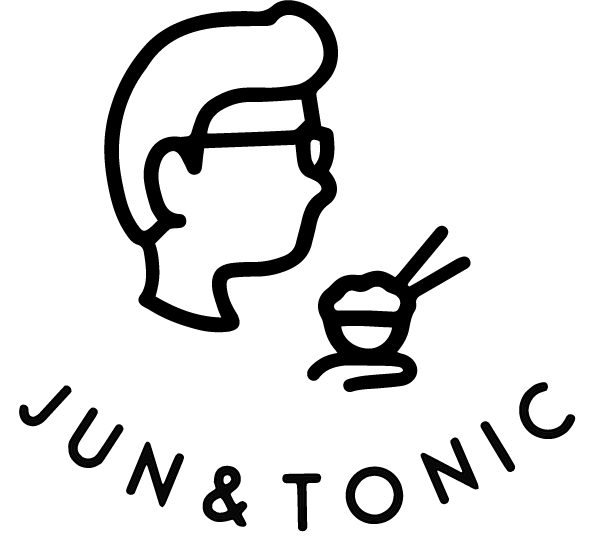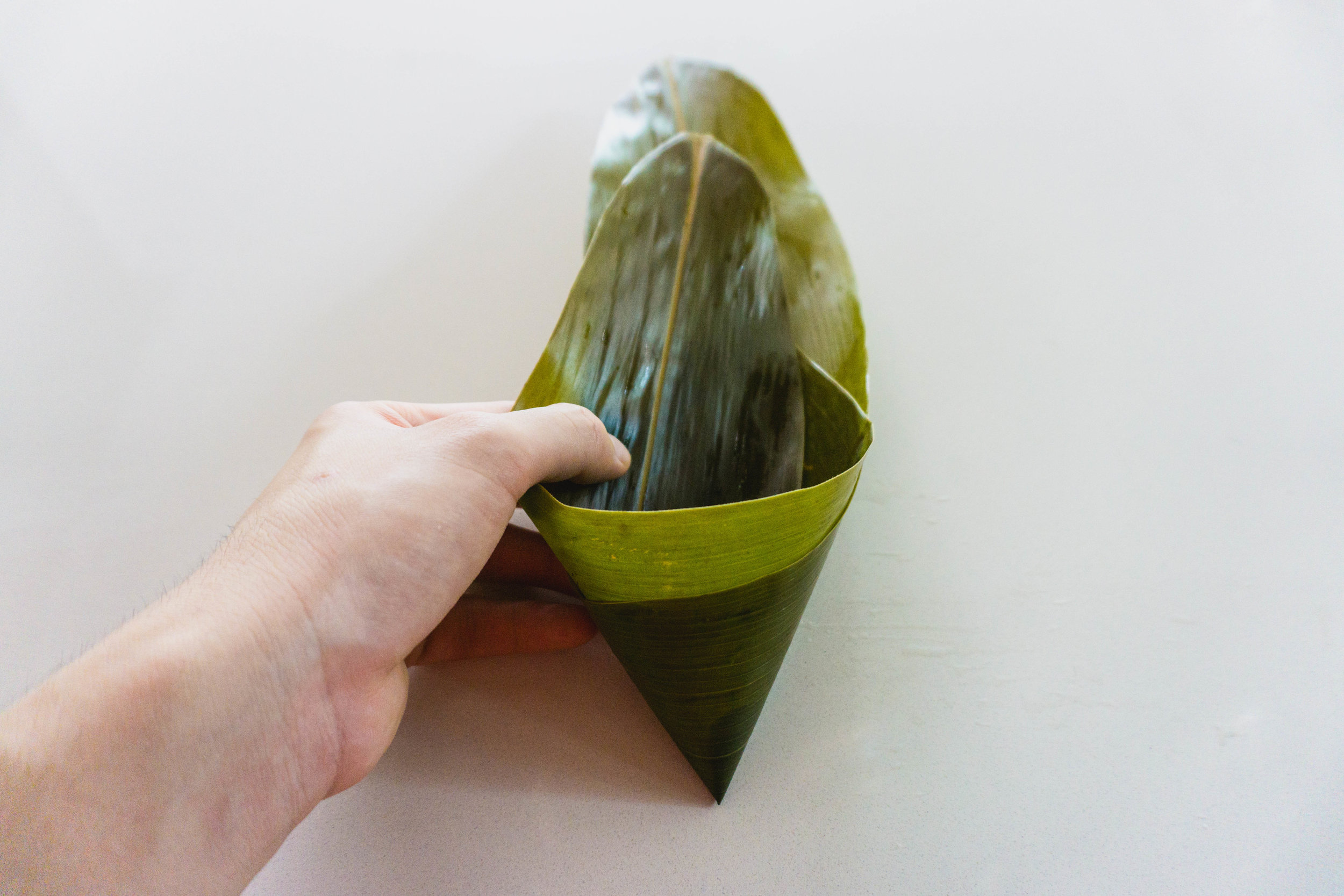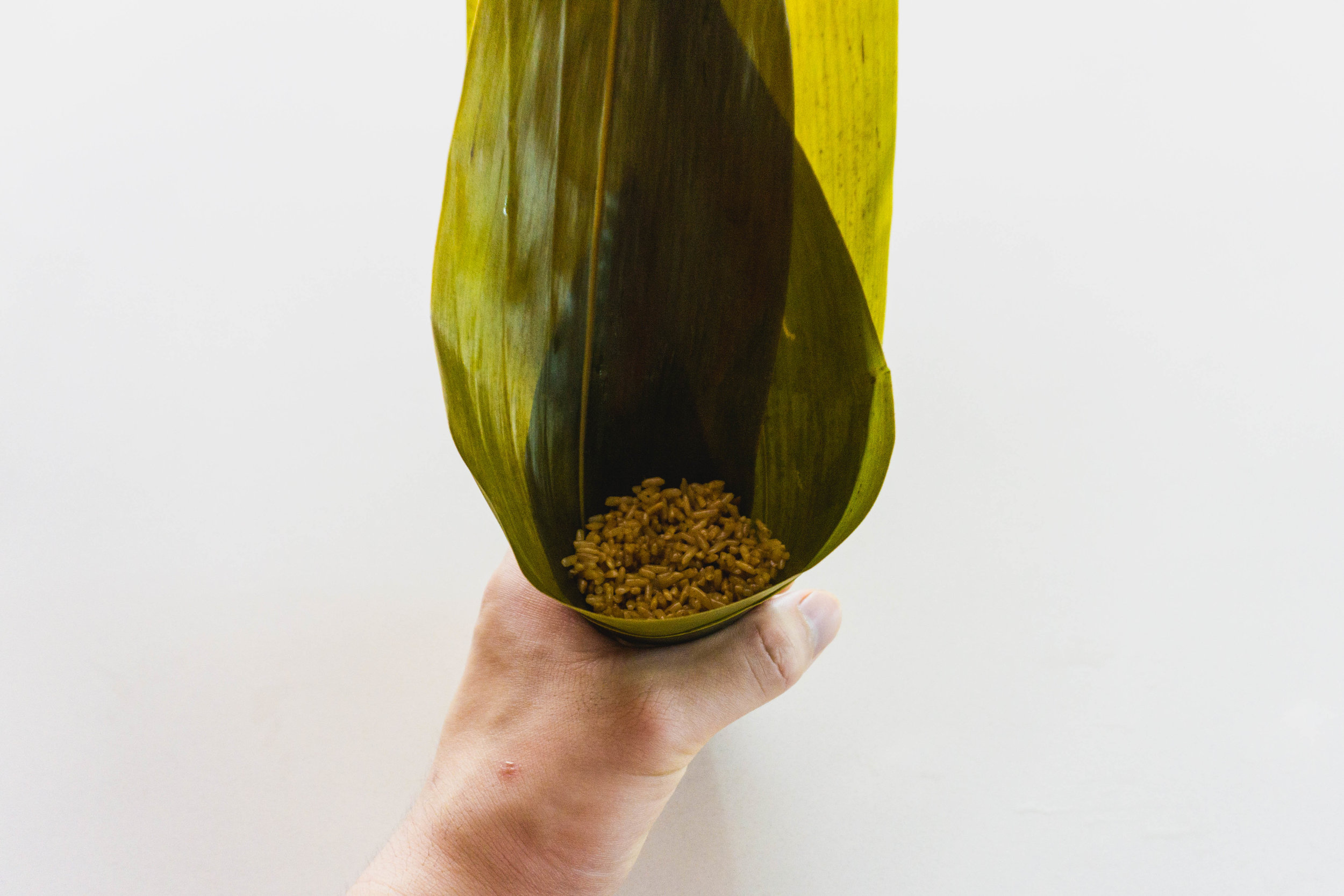Dumplings, Dragon Boats, and Pesticide-Wine
Here’s a bit of culture for the week!
There’s this festival in the Chinese calendar known as Duanwu Festival (端午节), which is also called Dragon Boat Festival in the west. It happened this past week, on the 30th of May. As with most Asian festivals, there’s a bunch of tradition and history (both factual and mythical) attached to this annual celebration, most of which I admit I had little clue about.
The best thing about this festival though (also the only reason I even know of its existence) is ZONGZIs (粽子s). AHH 胖死我了! (Literal translation: AHH FAT DIE ME.) If you can't tell by my enthusiasm, it is one of my favourite things to eat!
For the uninitiated, zongzis, also known as zhang/bakchang, are these sticky rice dumplings filled with stewed pork, salted egg yolk, mushrooms, chestnuts, beans, dried shrimps, and a whole bunch of other lovelies wrapped in super fragrant bamboo leaves, shaped into very geometrically-pleasing tetrahedrons (I know, much nerd) and simmered for hours mulling in its own juices, melding the hearty, umami flavours of all the components together into a pyramidal parcel of gluttony. *drool*
A bit of tradition
There’s a lot more to the Duanwu Festival than zongzis though. According to Wikipedia, “three of the most widespread activities conducted during the Duanwu Festival are eating zongzi, drinking realgar wine, and racing dragon boats.” Okay eating zongzi, yes I’m all too familiar with that, and yes I’ve heard of dragon boat races (though I’ve never partaken in one). But wait what’s this… realgar wine..? There’s an alcoholic part of the festival I’ve been missing all this while!? And what is realgar wine anyway? A quick search on google returned this: “realgar is a yellow-orange arsenic sulfide mineral… a pesticide and insecticide used against mosquitoes”. …umm I think I might give it a pass after all...
Even if people do drink realgar wine, dragon-boat-racing, zongzi-eating, and pesticide-wine-drinking might seem like three randomly cobbled up things that have little relevance to the festival itself, like how sombreros, mariachi bands, and shooting tequila have little to do with the actual history of Cinco de Mayo. That’s not the case here though, as there’s strong Chinese tradition and history behind these activities.
According to legend, the festival commemorates the death of Qu Yuan, a beloved poet and politician who was betrayed and exiled by his kingdom. (This was circa 280 BC, at a time when China was fragmented into many smaller kingdoms.) Despite his exile, Qu Yuan spent years writing poems expressing his endearing love for his country, his fealty never waning. But when his beloved homeland was conquered by the neighbouring kingdom years later, his spirit was finally defeated and he drowned himself in a river.
Upon hearing of his death, his loyal followers hurriedly went on boats (dragon boats, presumably) to retrieve his body from the river. His body was not found, which prompted his followers to throw glutinous rice into the river so that the fish would eat the rice instead of Qu Yuan’s body. They also poured realgar wine into the river to poison the river monsters and protect his body. The latter parts of the story are probably untrue, but they sure make for entertaining and memorable reasons to indulge in boat-racing and gluttony for the day! (Okay so maybe it is a little like taking tequila shots on Cinco de Mayo. :P)
A bit of family
Dragon boats and drinking pesticide-wine aside though, my family is probably most well-versed with the eating part of the festival, not least because mom would make tons of zongzis every year. We’ll eat a bunch of them the day they were made, pass some to our relatives and friends, eat some more for breakfast the next day and the day after, and freeze some to be consumed the next week. They are just that good, I kid you not.
Clearly, eating zongzis have somewhat been a tradition in our family. And as far as I know, my mom’s traditional zongzi recipe was passed down to her from my grandma (whom I call ma-ma), who back in the day learnt it from my great-grandmother from China, who (romantic, idllyic me thinks) learnt it from my great-great-grandmother.
For the longest time I thought my mom’s zongzis were the best, with the store-bought ones not even coming close to the taste and heartwarming capabilities of my mom's. But that belief was shattered when I tasted my ma-ma’s version, which was spectacularly superior. It had just the right balance of sweet, salt and umami (unapologetically leaning towards umami, just the way I like it), with lotsa filling but not so much that you start to miss the rice, with the perfect texture and density (packed tight enough to be able to hold its shape but each individual rice grain still distinguishable from the whole as you eat it), and clearly made with so much damn love.
I rarely get to taste my grandma’s cooking though; she doesn’t cook much nowadays due to her age (her spirit has not waned one bit though), but when she does cook, the whole family is always blown away. This makes me wonder - if my mom’s cooking is great, and my grandma’s better, does this make my great-grandma the secret Chinese Julia Child of her time!? Oh how I wish that were true!
Ancestral wishes aside, this year, for only the third time ever, I helped my mom with the laborious zongzi-making process. (I say helped, but I might've been more of a bane than a boon. :P) Regardless, helping her has made me appreciate the dishes of my culture a lot more, especially those steeped in waning tradition and technique like this one. So I thought I'd document the process to digitally immortalise this near-lost art. (You don’t see many elegantly-wrapped and great-tasting zongzis around anymore, sadly.) And maybe in a few years’ time I’ll revisit this blogpost and be able to wrap zongzis with my kids, continuing the tradition that was passed down from Great-Grandma-Chinese-Julia-Child.
(GGCJC I hope I made you proud. <3)
A bit of technique
via a photo gallery (feat. my oil-splatter-blistered left hand).
---
Traditional Zongzi/Zhang/Bakchang (粽子)
makes a dozen
Ingredients:
24 bamboo leaves (you’ll need two per zongzi), plus more just in case
12 pieces of twine or string, around 50cm each
6 shallots, thinly sliced
100g vegetable oil
Glutinous rice:
500g glutinous rice
2 cloves of garlic, minced
1 tbsp light soy sauce
2 tbsp dark soy sauce
1 tsp five spice powder
Pork belly and mushrooms:
100g pork belly, cut into pieces
30g dried shiitake mushrooms
2 cloves of garlic, minced
1 tsp light soy sauce
1 tbsp dark soy sauce
1 tbsp oyster sauce
1 tsp five spice powder
Peanuts:
80g peanuts, uncooked
1 tbsp dark soy sauce
1/2 tsp five spice powder
Other fillings:
6 salted egg yolks, halved
30g dried shrimps
60g dried chestnuts, optional
salt
pepper
Method:
- Soaking: Soak the bamboo leaves, glutinous rice, dried mushrooms, peanuts, and dried chestnuts in water overnight in separate bowls.
- Shallots: Heat up some oil in a pan/wok. Add the shallots in and fry them for around 2 minutes, removing them when they get crisp and golden. Reserve the oil.
- Glutinous rice: Heat some shallot oil in a pan/wok. Fry the minced garlic in the oil. Add the glutinous rice, the light and dark soy sauce, five spice powder, salt and pepper. Fry for roughly 10-15 minutes. (It won’t be completely cooked through) Season to taste.
- Pork belly and shrooms: As with the rice, start by frying the garlic in shallot oil. Add the pork belly, rehydrated shiitakes, light and dark soy sauce, oyster sauce, five spice powder. Add salt and pepper to taste. (Add more salt than you might think, the rice will absorb some of this salt which balances the overall flavour of the zongzi)
- Peanuts: Lightly fry the soaked peanuts for 5 minutes, adding the dark soy sauce, five spice powder and salt.
- Chestnuts: Boil for roughly 30 minutes in salted water. Remove any bits of chestnut skin left in the nooks and crannies of the chestnuts.
- Prepare to assemble: tie 6 lengths of twine together at one end, leaving the other end free to tie your zongzis to. Anchor the tied end of twine to a hook/windowsill/underside of a table. This is to make tieing the zongzis a lot easier! (You’ll wish you had three hand when tying them for the first time.) You can wet the twine to make them easier to work with.
- Assembly: Here comes the tricky part! (Refer to the photos if you get stuck!) First, take two pieces of bamboo leaves together and overlap them halfway. Then, bend the leaves just off-center and fold them so they make a cone-shaped, with one end longer than the other. Fill the cone with the glutinous rice, then add a bit of each ingredient, finally filling up the rest of the space with more rice. Make sure the rice and ingredients are tightly packed. Then, cover the rice with the part of the leaf that’s sticking out, and fold in the two edges (make sure there’s no rice trapped in between). Then, squeeze and shape the zongzis so you get a pyramidal shape, and fold the rest of the leaf around the dumpling. Finally, loop the twine around the zongzi twice, tying a knot at the end of the second loop. Repeat for the remaining zongzis.
- Cooking the zongzis: Gently nestle the zongzis in a deep pot. If you don’t have a pot large enough to fit all of them, cook them in batches. Fill the pot with water until all the zongzis are fully submerged. Add a good amount of salt and oil (to prevent the rice from sticking too much to the leaves) to the water, and bring it to a boil. Once it starts boiling, turn it down to a simmer, cover the pot, and let it simmer for 3-4 hours.
- Eat: Cut the twine and unwrap the zongzi. Enjoy the hard-earned fruits of your labour!
Notes:
- The cook times in this recipe are very forgiving. If the peanuts or chestnuts are undercooked in the first stage, no matter, just extend the cooking time of the zongzis in the water for an hour or so.
- The zongzis can be cooked in a pressure cooker, which cuts down the cooking time to 45 minutes!













